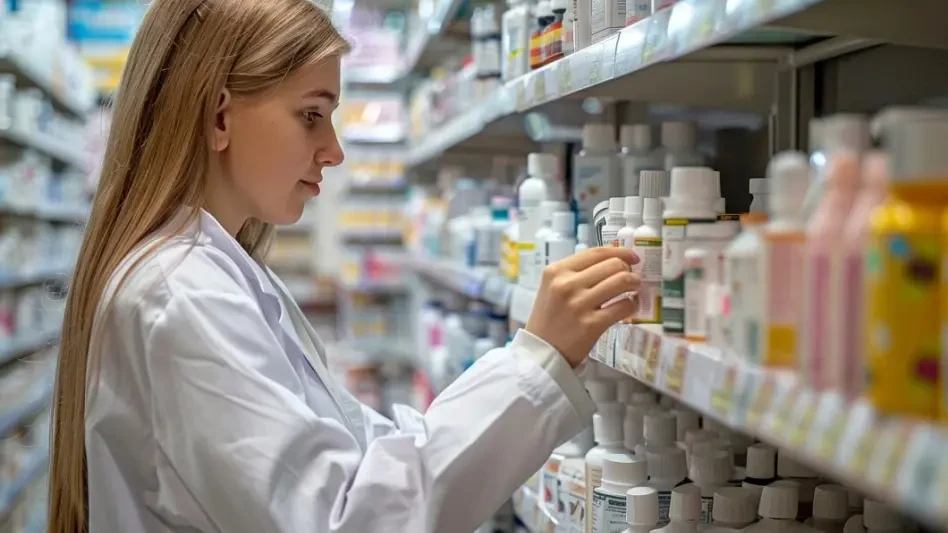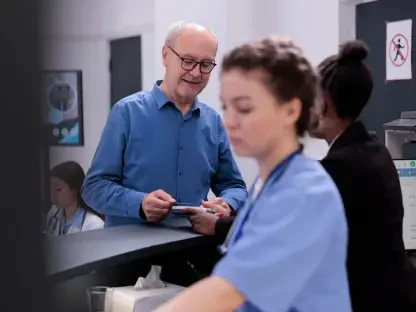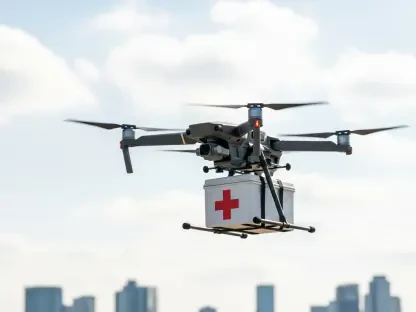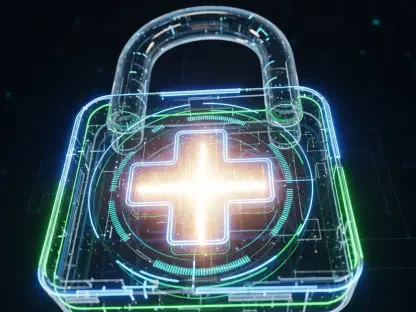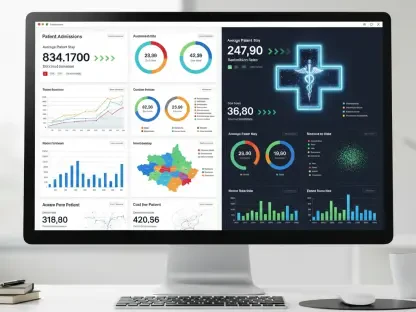In a nation where over 40% of adults grapple with obesity, securing effective treatment often feels like an uphill battle, especially for those like a single parent juggling work and family, unable to carve out time for a doctor’s visit or afford steep medication costs. For millions facing such challenges, accessing transformative drugs like Zepbound—a breakthrough in weight loss management—has been frustratingly out of reach. Yet, a groundbreaking collaboration between pharmaceutical giant Eli Lilly and retail titan Walmart is changing the game, promising to bring this vital medication closer to those who need it most.
This partnership stands as a beacon of hope amid a healthcare crisis marked by supply shortages and financial barriers. By integrating Walmart’s vast network of nearly 4,600 pharmacies with Eli Lilly’s direct-to-consumer platform, LillyDirect, patients can now pick up Zepbound in-store or opt for free home delivery. This initiative, rolled out in late 2024, addresses not just convenience but also affordability, with self-pay pricing starting at $349 per month. It’s a pivotal step toward redefining how chronic conditions like obesity are managed in today’s fast-paced world.
Why Getting Zepbound Just Got Simpler
The landscape of healthcare access has shifted dramatically with Eli Lilly teaming up with Walmart. For countless individuals, the process of obtaining Zepbound no longer involves long waits or complex logistics. Instead, a quick stop at a local Walmart pharmacy offers a tangible solution, blending the ease of digital ordering through LillyDirect with the familiarity of in-person pickup.
This collaboration eliminates many traditional hurdles that patients face. No longer must they rely solely on mail-order systems or navigate limited pharmacy options. With Walmart’s extensive reach across the United States, the physical presence of a trusted retailer ensures that even those in rural or underserved areas have a fighting chance to access their medication without delay.
The impact extends beyond mere logistics to a deeper sense of empowerment. Patients now have the flexibility to choose a method that fits their lifestyle—whether that’s grabbing a prescription during a grocery run or scheduling a delivery to their doorstep. This dual-access model is a direct response to the urgent need for streamlined healthcare solutions in managing chronic conditions.
The Urgent Demand for Weight Loss Solutions
Obesity remains a pressing public health issue, affecting millions and straining both personal and systemic resources. The emotional toll of living with this condition is compounded by financial burdens, as many struggle to afford treatments that can change their lives. Zepbound, hailed as a significant advancement, has seen soaring demand, yet access has often been stymied by shortages and high costs.
Barriers like these highlight a critical gap in the healthcare system. Patients frequently find themselves caught in a cycle of frustration, unable to start or sustain treatment due to limited availability or prohibitive pricing. Stories abound of individuals rationing doses or abandoning therapy altogether, underscoring the desperate need for innovative approaches to distribution and affordability.
Partnerships such as the one between Eli Lilly and Walmart emerge as vital answers to these challenges. By prioritizing accessibility, this collaboration seeks to alleviate the strain on patients, ensuring that life-changing medications aren’t just a privilege for the few but a possibility for the many. It’s a recognition that tackling obesity requires more than medical innovation—it demands systemic change.
Inside the Eli Lilly-Walmart Alliance
At the heart of this transformative initiative is a strategic alignment aimed at revolutionizing access to Zepbound. Walmart, as the first retail chain integrated into LillyDirect for self-pay, single-dose vials, offers pickup across all approved strengths at its widespread pharmacy locations. This move leverages the retailer’s massive footprint to bring medication directly into communities nationwide.
Affordability plays a central role in the alliance’s design. Self-pay pricing begins at $349 per month for the 2.5 mg dose, rising to $499 for higher strengths, providing a viable option for those without insurance coverage. Patients can select either in-store pickup for immediate access or free home delivery, catering to varied needs and circumstances with a focus on choice.
The synergy of digital and physical access points sets this partnership apart. By combining LillyDirect’s online platform with Walmart’s brick-and-mortar presence, the initiative tackles longstanding barriers head-on. It’s a thoughtful approach to ensuring that starting and maintaining treatment becomes a smoother journey, even as supply challenges persist in the broader market.
Perspectives from Industry Leaders
Key figures driving this collaboration shed light on its significance for patients and the healthcare industry. Jennifer Mazur, SVP and General Manager of LillyDirect, emphasizes that merging their patient-centric platform with Walmart’s extensive network directly confronts access issues. Her vision is clear: empowering individuals to take control of their health journey with minimal obstacles.
Echoing this sentiment, Kevin Host, Senior Vice President of Pharmacy at Walmart, highlights the convenience factor for busy lives. He points out that this partnership not only simplifies medication pickup but also builds trust through familiar pharmacists who guide patients every step of the way. This human touch is a cornerstone of the initiative’s approach to care.
Data reinforces the growing traction of direct-to-consumer models like LillyDirect, with 35% of new Zepbound prescriptions fulfilled through the platform in the second quarter of 2024. These insights from leaders and statistics alike paint a picture of a healthcare landscape evolving toward hybrid solutions, where digital innovation and traditional pharmacy services work in tandem to meet consumer needs.
Navigating Zepbound Access Through This Collaboration
For those eager to benefit from this new avenue, understanding the process is straightforward. Start by confirming eligibility with a valid, on-label prescription for Zepbound to access self-pay options via LillyDirect. This initial step ensures that only those who meet medical criteria proceed with the program.
Next, decide on the most convenient method—picking up at a nearby Walmart pharmacy for quick access or selecting free home delivery for ease. Both options are designed to fit diverse schedules and geographic realities, making treatment accessible whether one lives near a store or prefers staying home. Utilizing electronic health record systems can further simplify routing prescriptions to LillyDirect.
Additional support is available through LillyDirect’s telehealth partners, such as 9amHealth or Form Health, which offer virtual consultations and potential cost savings. Engaging with Walmart pharmacists directly also provides a seamless experience, ensuring guidance at every turn. These resources collectively enable patients to tailor their treatment journey with confidence and flexibility.
Reflecting on a Milestone in Healthcare Access
Looking back, the partnership between Eli Lilly and Walmart marked a turning point in how patients accessed essential medications like Zepbound. It bridged critical gaps in affordability and convenience, setting a standard for how pharmaceutical and retail giants could unite to address public health challenges. The initiative proved that innovative distribution models could transform lives by prioritizing patient needs.
As the healthcare landscape continues to evolve, the success of this collaboration highlighted the potential for similar alliances to tackle other chronic conditions. Stakeholders were encouraged to explore further integrations of digital platforms and physical networks, ensuring broader reach for life-changing treatments. The focus shifted toward sustaining momentum through expanded telehealth services and cost-effective solutions.
Ultimately, the legacy of this effort underscored a vital truth: access to care should never be a barrier. Future considerations turned to scaling such models across different medications and regions, with an eye on empowering every patient to manage their health effectively. This partnership laid the groundwork for a more inclusive healthcare system, inspiring ongoing efforts to blend technology and tradition in meaningful ways.
